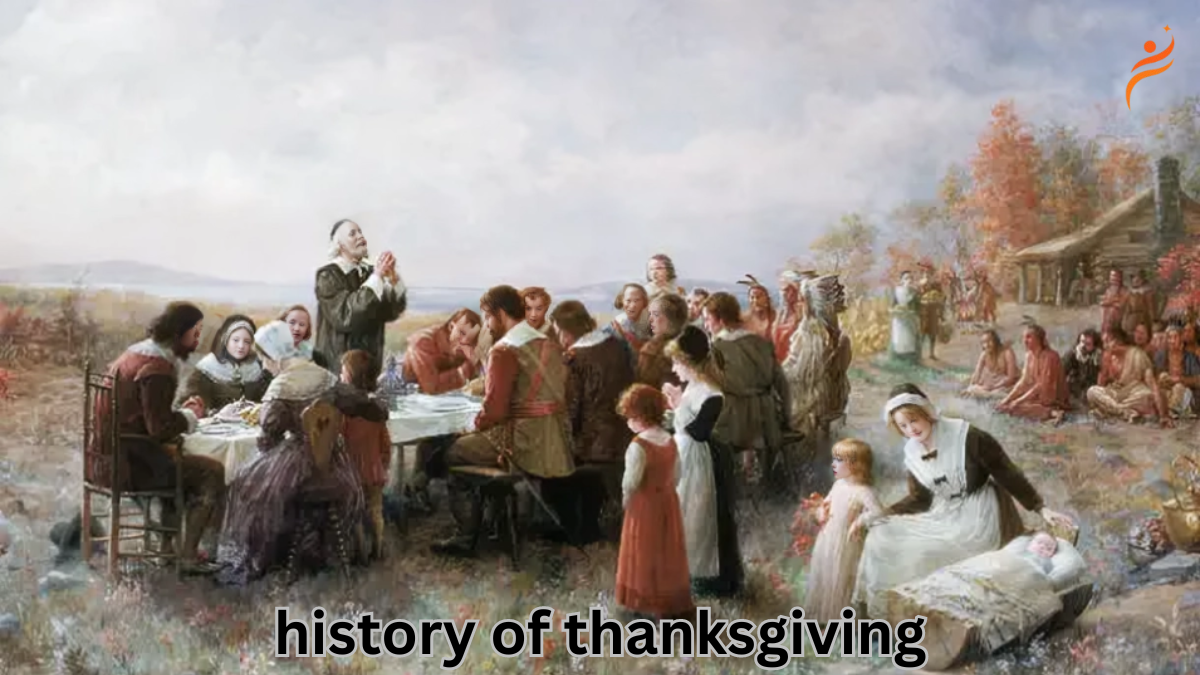Thanksgiving is a cherished holiday in the United States, celebrated with feasts, family gatherings, and expressions of gratitude. But the history of Thanksgiving is rich and complex, reflecting a blend of cultural traditions and historical events. This article explores the origins, evolution, and significance of Thanksgiving, providing a comprehensive look at the history of Thanksgiving and how it has shaped American culture.

Origins of Thanksgiving
Early Celebrations and Pilgrim Traditions
The history of Thanksgiving dates back to the early 17th century, with the arrival of the Pilgrims in North America. The most commonly recognized event in the history of Thanksgiving occurred in November 1621 when the Pilgrims, having settled in Plymouth, Massachusetts, celebrated their first successful harvest. Fifty-three Pilgrims and around 90 Native Americans from the Wampanoag tribe attended this feast. This event, often considered the first Thanksgiving, was a time of sharing and gratitude for the bounty of the harvest.
The Pilgrims’ journey to the New World began with their departure from England aboard the Mayflower in 1620. Seeking religious freedom, they faced numerous hardships during their voyage and the harsh winter in their new homeland. People saw their survival and eventual success in growing crops as a miracle, which led to the celebration of Thanksgiving. However, it is essential to acknowledge that the history of Thanksgiving also includes complex interactions between the Pilgrims and Native Americans, which evolved into various historical narratives.
Native American Perspectives
The history of Thanksgiving from a Native American perspective often gets overlooked.
Evolution of Thanksgiving Traditions
From a Regional to a National Holiday
For over two centuries, people celebrated Thanksgiving in various forms and at different times in the American colonies. Each colony had its own traditions and dates for the holiday. It wasn’t until President Abraham Lincoln’s proclamation in 1863 that Thanksgiving became a national holiday. During the American Civil War, Lincoln sought to unify the country and offer a sense of hope by declaring the last Thursday in November as a day of “Thanksgiving and Praise to our beneficent Father who dwelleth in the Heavens.”
Lincoln issued his declaration after Sarah Josepha Hale, a prominent writer and editor, campaigned for the establishment of Thanksgiving as a national holiday. Hale’s advocacy played a significant role in formalizing the date and making Thanksgiving a time for reflection and gratitude across the nation.
Modern Celebrations and Traditions
The history of Thanksgiving continued to evolve into the 20th century, with the development of various traditions that are now integral to the celebration. The Thanksgiving Day Parade, which began in the early 1920s, became a prominent feature of the holiday, with the Macy’s Thanksgiving Day Parade being one of the most famous. This annual event, held in New York City, showcases elaborate floats, performances, and balloons, drawing millions of viewers each year.
Another significant tradition is the Thanksgiving feast, which typically includes turkey, stuffing, cranberry sauce, and pumpkin pie. This meal reflects both the Pilgrims’ harvest celebration and the culinary evolution of American cuisine. The history of Thanksgiving meals has also seen influences from different immigrant communities, contributing to the diverse array of dishes served during the holiday.

FAQs
1. What was the first Thanksgiving feast like?
In 1621, the Pilgrims and the Wampanoag people held a three-day Thanksgiving feast. They served a variety of foods, including venison, fowl, seafood, and local vegetables. The meal celebrated the Pilgrims’ successful harvest and embodied a spirit of cooperation and gratitude.
2. When did Thanksgiving become a national holiday?
Thanksgiving became a national holiday in 1863 when President Abraham Lincoln issued a proclamation declaring the last Thursday in November as a day of Thanksgiving and Praise. This decision was influenced by the advocacy of Sarah Josepha Hale, who lobbied for the establishment of the holiday.
3. How do modern Thanksgiving celebrations differ from early ones?
Modern Thanksgiving celebrations have evolved to include various traditions such as the Thanksgiving Day Parade, football games, and elaborate feasts. While the early celebrations focused on a simple harvest meal, contemporary observances often feature larger gatherings, diverse foods, and entertainment activities.
4. What is the significance of the Thanksgiving Day Parade?
The Thanksgiving Day Parade, particularly the Macy’s Thanksgiving Day Parade, has become a significant tradition in American culture. It serves as a festive event that marks the beginning of the holiday season, featuring floats, performances, and balloons that entertain millions of viewers.
5. How can we acknowledge Native American perspectives during Thanksgiving?
Acknowledging Native American perspectives during Thanksgiving involves recognizing the historical and ongoing impact of colonization on Indigenous peoples. It is important to educate ourselves about the history of Thanksgiving from multiple viewpoints and support efforts to address historical injustices and promote cultural understanding.
Conclusion
The history of Thanksgiving is a tapestry woven with threads of cultural traditions, historical events, and evolving practices. From its origins with the Pilgrims and Native Americans to its establishment as a national holiday and its modern-day celebrations, Thanksgiving represents a complex and multifaceted story. Understanding the history of Thanksgiving helps us appreciate the holiday’s significance while recognizing the diverse experiences and perspectives that contribute to its meaning. As we gather with loved ones each November, let us reflect on both the historical and contemporary aspects of Thanksgiving, embracing its spirit of gratitude and unity.

